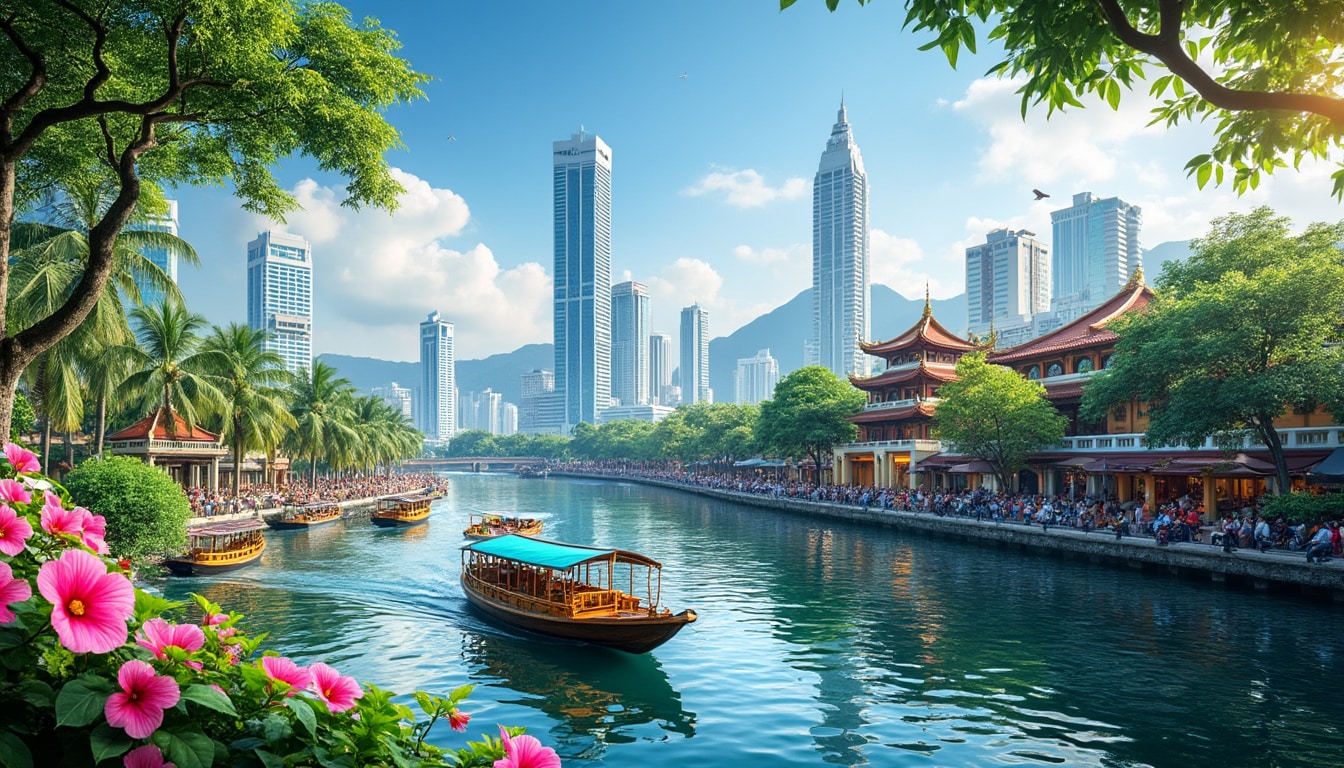The vibrant metropolis of Ho Chi Minh City, often known by its historic name Saigon, is much more than the bustling urban landscapes characterized by its skyscrapers and hectic streets. Nestled in the southeastern part of Vietnam, this city presents a unique amalgamation of urban and natural wonders. From the expansive mangrove forests of the Can Gio Nature Reserve to the labyrinthine waterways of the Mekong Delta, Ho Chi Minh City offers an array of ecological treasures that beckon NatureConnect enthusiasts and UrbanEcosystems explorers alike.
The Topography of Ho Chi Minh City
Situated at the heart of Southeast Asia, Ho Chi Minh City is a geographical marvel that prominently features a myriad of landscapes—each reflecting the vivid and intricate essence of Vietnam’s southern region. Geographically located at 10°45’N, 106°40’E, the city’s topography is distinguished by its proximity to the Saigon River and its role as the economic heart of Vietnam.
Ho Chi Minh City’s terrain includes several different types of landscapes, from flat plains to undulating hills. The metropolis boasts a combination of urban architecture and verdant green spaces, which are hallmarks of its dynamic topography. This blend of nature and urban influence renders an environment where wildlife flourishes amidst human hubbub. For those keen on nature exploration, the city provides a distinctive opportunity to explore its GreenPaths and EcoGreen initiatives, which seek to preserve the ecological balance.
Moreover, the city sits by the skirt of the mighty Mekong Delta, an area punctuated by a network of rivers and canals that water the fertile land. This region is crucial for agriculture and contributes to the rich biodiversity of the city. It also boasts economic significance, being interspersed with southern provinces through efficient highways and a trans-Vietnam railway.
- 🗺️ Location: 10°45’N, 106°40’E
- 🌿 Land: Predominantly lowland with lush greenery
- 🚉 Connectivity: Linked by major highways and railways
- 🌊 Water Bodies: Rich in rivers and canals
Given the extensive network of waterways, the Saigon River plays a critical role in the city’s economic activities. It serves as a major conduit for transport and trade, demonstrating the symbiotic relationship between the city’s geography and its lifestyle.
| 🌆 City Feature | 📍 Description |
| Saigon River | Principal river that defines the city’s economic and social activities |
| Mekong Delta | Fertile land with intricate waterways supporting agriculture and biodiversity |
| Can Gio Reserve | Nature reserve with mangrove forests and diverse wildlife habitats |
A visit to Ho Chi Minh City is not complete without indulging in the unique hydrological relationship that the city shares with its river systems. This natural aspect, coupled with modern amenities, provides an UrbanEcosystems experience like no other. Enthusiasts can engage in NatureExplorer adventures to unveil the hidden gems scattered across this bustling city.
Biodiversity and Ecological Significance
Ho Chi Minh City is not just an economic giant but also a treasure trove of biological diversity. Encapsulating several thousand species of flora and fauna, the city offers an exciting opportunity for those passionate about VietNature and WildlifeViet exploration. With resources like the Can Gio Mangrove Biosphere Reserve, the city turns into a matrix of ecological initiative and environmental conservation.
This UNESCO-recognized biosphere reserve is located only a modest trip from the main urban area. Spanning over 700 square kilometers, it plays a vital role in ensuring ecological balance while highlighting biodiversity conservation efforts. It consists of lush mangrove forests, swamps, and mudflats that shelter a variety of aquatic and terrestrial species replete with a plethora of birds, fish, reptiles, and insects.
- 🦜 Birds: Home to diverse species including migratory birds
- 🦎 Reptiles: Houses endemic reptilian fauna
- 🐟 Fish Species: Rich in aquatic biodiversity
- 🌿 Flora: Features unique mangrove vegetation
| 🌿 Ecological Area | 📍 Ecological Role |
| Can Gio Mangrove | Serves as a buffer zone against coastal erosion and nurtures biodiversity |
| Sai Gon River System | Vital for maintaining habitat corridors and water quality |
The city has embarked on various conservation projects focusing on impacts such as atmospheric balance, conservation of marine life, and initiatives like SustainableSaigon and EcoGreen movements which promote sustainable living practices and environmental harmony in urban settings.
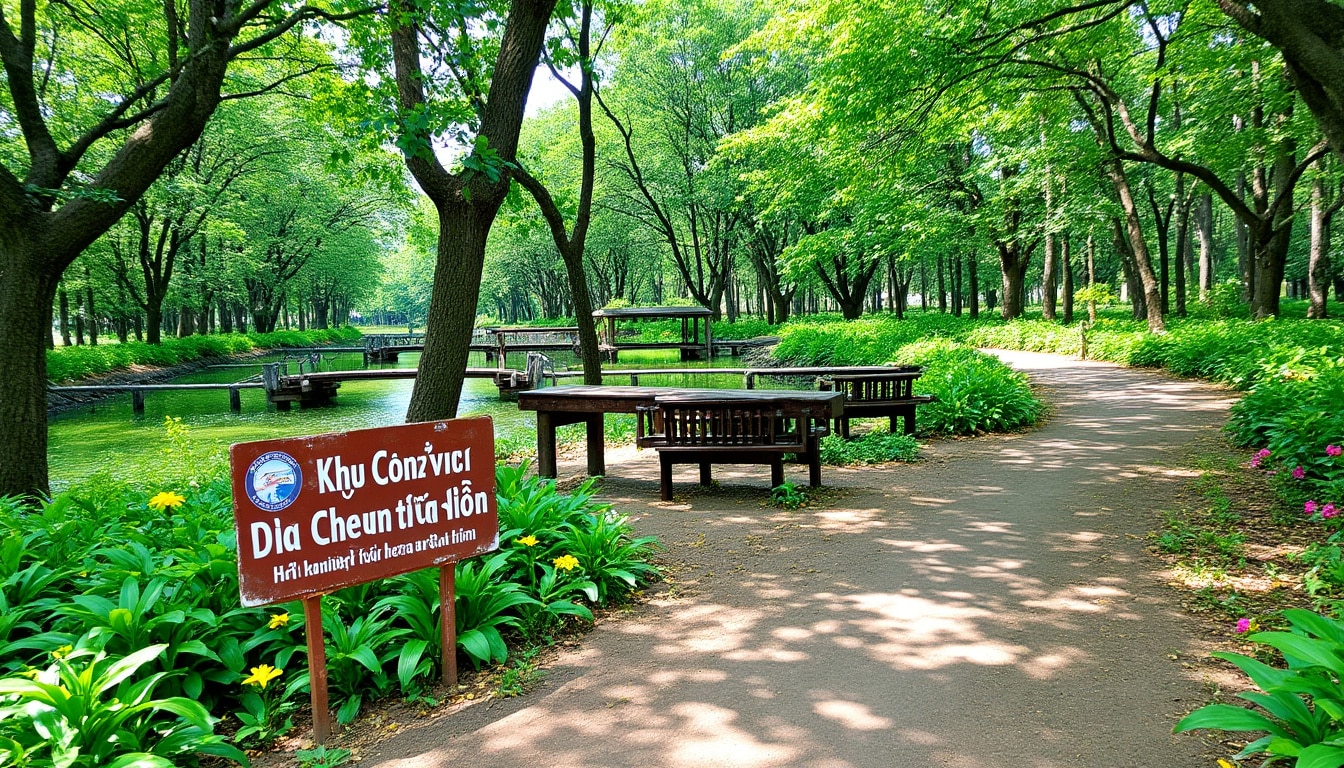
Climate and Its Influences
Ho Chi Minh City enjoys a tropical climate characterized by distinct seasons that play a crucial role in shaping the daily life of its inhabitants. The city’s climate is predominantly determined by its geographical position, close to both the equator and the sea.
There are two main seasons in the city: the dry season and the wet season. The dry season, extending from November to April, brings an average temperature of 26°C. There is plenty of sunshine and balmy conditions, favorable for tourists and outdoor activities.
Conversely, the wet season influences the city from May to October, marked by sudden heavy showers and an average temperature of 29°C. The high humidity level—around 80%—adds a tropical ambiance to the city’s climate. These seasonal patterns significantly impact agricultural cycles and urban living.
- 💧 Dry Season: Nov – Apr, 26°C, less rainfall
- ☔ Wet Season: May – Oct, 29°C, high rainfall
- 🌬️ Humidity: Averaging 80%
| 🌦️ Season | ❓ Features |
| Dry Season | Lower humidity, brighter skies, lower risk of floods |
| Wet Season | Higher rainfall, potential for flooding, lush vegetation |
Flooding remains a challenge during the wet season, exacerbated by urban development. Such natural phenomena necessitate robust urban planning and sustainability strategies like GreenPaths and HoChiMinhTrails to mitigate adverse effects. For more detailed insights into Ho Chi Minh City’s climate, visit the comprehensive climate guide.
Urban Areas Intertwined with Nature
Amidst high-rise buildings and modern infrastructure, Ho Chi Minh City retains a refreshing embrace with nature. The city integrates urban areas with natural spaces to form a seamless urban ecosystem that accommodates both ecological practices and modern development.
The careful curation of urban parks, green spaces, and ecological corridors has enabled the city to adopt the UrbanEcosystems model, promoting sustainability and eco-friendly living. Efforts under SustainableSaigon prioritize green urban planning, embedding natural elements into everyday city life.
For instance, urban parks such as the Tao Dan Park offer oasis-like reliefs from the city’s hustle, and the sprawling Gia Dinh Park spans multiple districts providing recreational spaces along with ecological value. Urban trees help shade the streets, support wildlife, and ameliorate the urban heat island effect.
- 🌳 Park Areas: Tao Dan Park, Gia Dinh Park
- 🌱 Green Corridors: Integrating wildlife habitats within the city
- 🌍 Sustainability: Focused on reducing carbon footprint
| 🌳 Green Space | 📍 Function |
| Tao Dan Park | Leisure and cultural activities with native flora |
| Gia Dinh Park | Supports biodiversity within urban settings |
This integration is pivotal for enhancing urban resilience and engaging residents in EcoGreen and NatureExplorer activities. Such initiatives provide not only aesthetic and recreational value but also prove instrumental in improving air quality and promoting mental well-being. To explore more on the urban equilibrium of Ho Chi Minh City and its composition, visit here.
Cultural and Environmental Symbiosis
Ho Chi Minh City serves as a unique case where environmental dynamics coalesce with cultural heritage, creating a vibrant and living tapestry that underpins its identity. The cultural landmarks set alongside natural landscapes reflect a harmonic symbiosis that contributes immensely to the city’s charm and allure.
The city encompasses several cultural districts, each offering a unique glimpse into Vietnam’s rich historical past intertwining with its scenic beauty. Places like the Cu Chi tunnels and the ornate pagodas offer not only historical insights but also exhibit diverse ecological settings. The integration of cultural practices and environmental stewardship is evident through traditional practices and festivals that celebrate nature’s abundance and diversity.
- 🏞️ Historical Sites: Cu Chi Tunnels, War Remnants Museum
- 🕌 Religious Sites: Jade Emperor Pagoda, Notre-Dame Cathedral Basilica
- 🎉 Cultural Festivals: Celebrations tied to agricultural and ecological cycles
| 🏛️ Cultural Landmark | 📅 Historical Significance |
| Cu Chi Tunnels | Significance during the Vietnam War, reflective of resilience |
| Jade Emperor Pagoda | Cultural religious practices intertwined with ecological settings |
The festivals often emphasize themes of gratitude towards nature, incorporating rituals and communal gatherings that reinforce social bonds while promoting environmental awareness. Explore further cultural intersections at this resource. The city’s evolving dynamic underscores the importance of preserving its cultural identity while advancing ecological prosperity. This balance forms the crux of what might be termed as the ‘GeoVietnam’ phenomena.
FAQ: Nature and Geography of Ho Chi Minh
- Q1: What distinguishes Ho Chi Minh City’s geography?
A: It is marked by rich networks of rivers and canals, a blend of urban and rural landscapes, and its geographical position in the South of Vietnam.
- Q2: How does the climate influence life in Ho Chi Minh City?
A: With its tropical climate, the city experiences distinct wet and dry seasons, impacting agriculture, daily life, and urban planning.
- Q3: Are there significant ecological projects in the city?
A: Yes, initiatives like SustainableSaigon and EcoGreen focus on promoting sustainability and reducing the carbon footprint.
- Q4: How do cultural practices integrate with environmental stewardship in the city?
A: Cultural festivals and practices often celebrate nature and its abundance, reinforcing environmental awareness and social bonds.
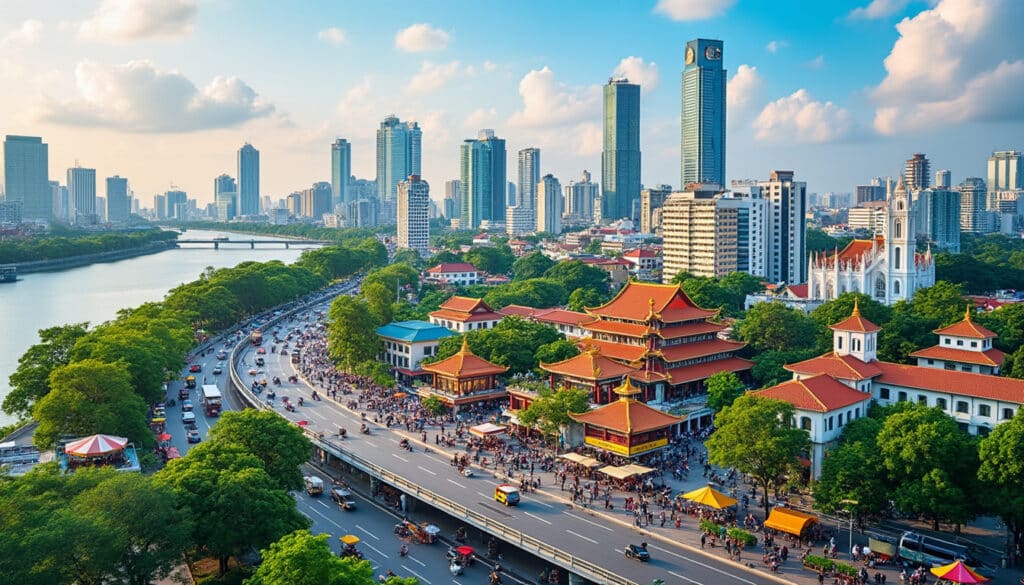
Geographical features of Ho Chi Minh
Ho Chi Minh City, often known as Saigon, is a vibrant metropolis at the heart of Vietnam’s southern region. This bustling city intertwines history, culture, and modernity, offering visitors a unique glimpse into its geographical richness. The city’s landscape is…
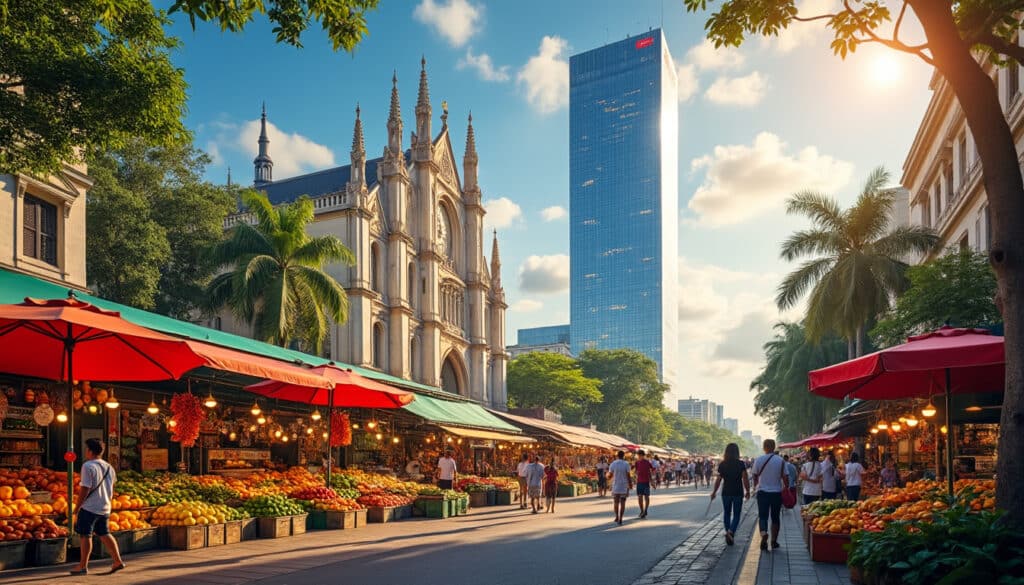
Location and coordinates of Ho Chi Minh
Ho Chi Minh City, known for its vibrant culture and bustling streets, stands out as a pivotal point on the map of Vietnam. As we navigate through the city’s geographic coordinates, one can’t help but be enchanted by its rich…

Nature and wildlife in Ho Chi Minh
When one thinks of Ho Chi Minh City, the images that often come to mind are bustling streets, scooters weaving through traffic, and skyscrapers stretching toward the sky. Yet, hidden within this urban jungle are pockets of serene natural beauty…
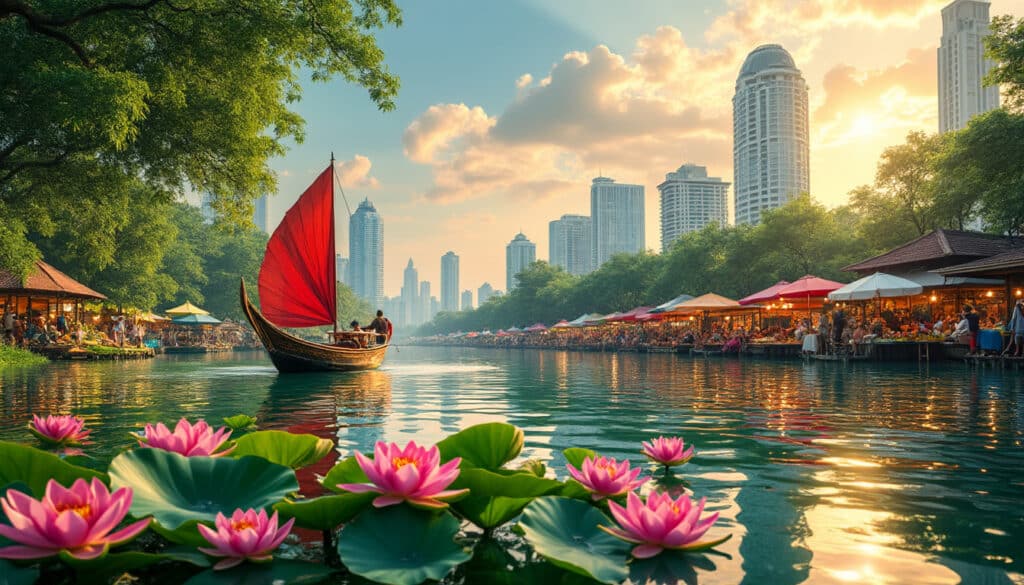
Rivers and water near Ho Chi Minh
As urban explorers traverse the sprawling, bustling streets of Ho Chi Minh City, they encounter a juxtaposition of modernity and history. Nestled within this urban jungle lies a network of rivers and waterways that not only define the city’s landscape…

